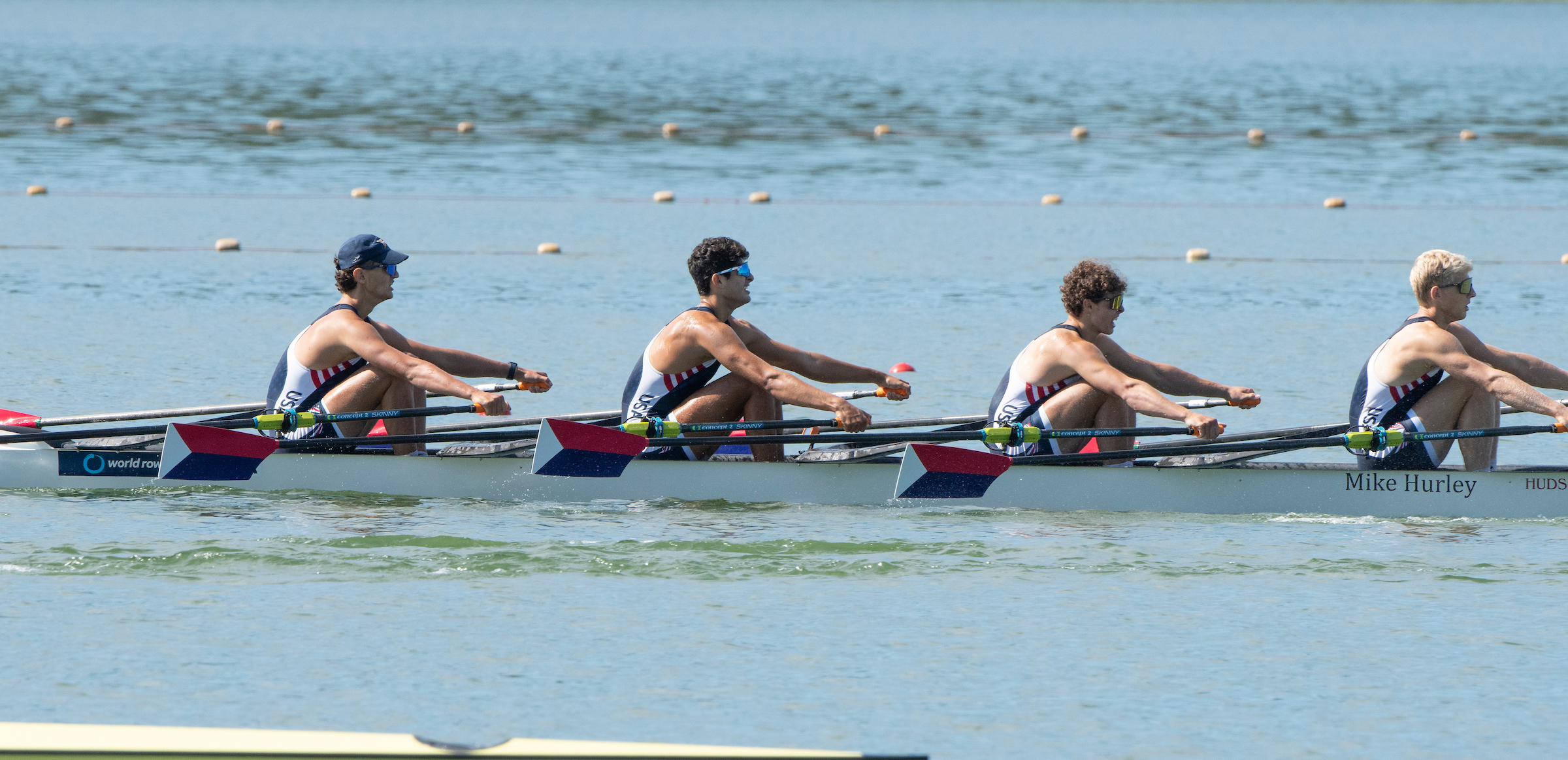BY MARLENE ROYLE
PHOTO BY PETER SPURRIER
To continue reading…
Register for free to get limited access to the best reporting available.
Free accounts can read one story a month without paying.
Register for free
Or subscribe to get unlimited access to the best reporting available. Subscribe
To learn about group subscriptions, click here.
Already a subscriber? Login
Coordination is the integration of the central nervous system’s processes of speed, strength, endurance, and flexibility. To improve your rowing, you must learn to perform the stroke in consistent patterns. Adapting to higher stroke rates and being able to make subtle adjustments in your stroke to stabilize the hull or clean up bladework can be improved with specific drills.
There are several methods for developing coordination. One way is to perform a skill with the opposite limb or in an unusual position. If we apply this to sweep rowing, this means having athletes regularly switch sides to become competent on port and starboard or practicing drills that alternate hands on the sweep oar, such as outside hand only, inside hand only, or outside hand on the drive/inside hand on the recovery. For scullers, there is a challenging drill I refer to as the Swinford Switch. Scull with the port blade squared and the starboard blade feathered for 10 strokes, and then in one stroke, switch to the port blade feathered and the starboard blade squared for 10 strokes. This is a first-rate drill for right-left integration.
Altering the speed or tempo of performing a movement is another way to improve synchronization of body parts. Exercises that increase the stroke rate progressively or with variations in rate accomplish this. Example: 40-stroke pieces in which you row at full pressure for 20 strokes at a base rate then raise the rate two strokes per minute every two strokes for 20 strokes. If your base rate is 30 strokes per minute, in the second 20 strokes, your rate will increase to 32-34-36-38-40. Another drill for high-speed coordinated reactions is rowing half slide at maximum tempo, increasing the pace every five strokes. Once bladework deteriorates, the drill ends.
Technical challenges combined with complicated performance conditions better a rower’s ability to cope and react efficiently. Practices designated for rowing in various boat classes, such as changing from an eight to a pair, a sweep boat to a sculling boat, a single to a double challenge the body’s sensitivity. Being exposed to different boats, wavy water, windy conditions, and currents adds another layer of difficulty to building skill.
Games of all sorts or practicing unrelated sports will also help develop a repertoire of movements and body knowledge that will be incorporated into your stroke in subtle ways, so cross-country skiing, tennis, or rock climbing can all take their place in your training plan.
Marlene Royle is the author of Tip of the Blade: Notes on Rowing. She specializes in training for masters rowers. Her coaching service, Roylerow Performance Training Programs, provides the program and the support you need to improve your competitive edge. For information, email Marlene at roylerow@aol.com or visit www.roylerow.com.

